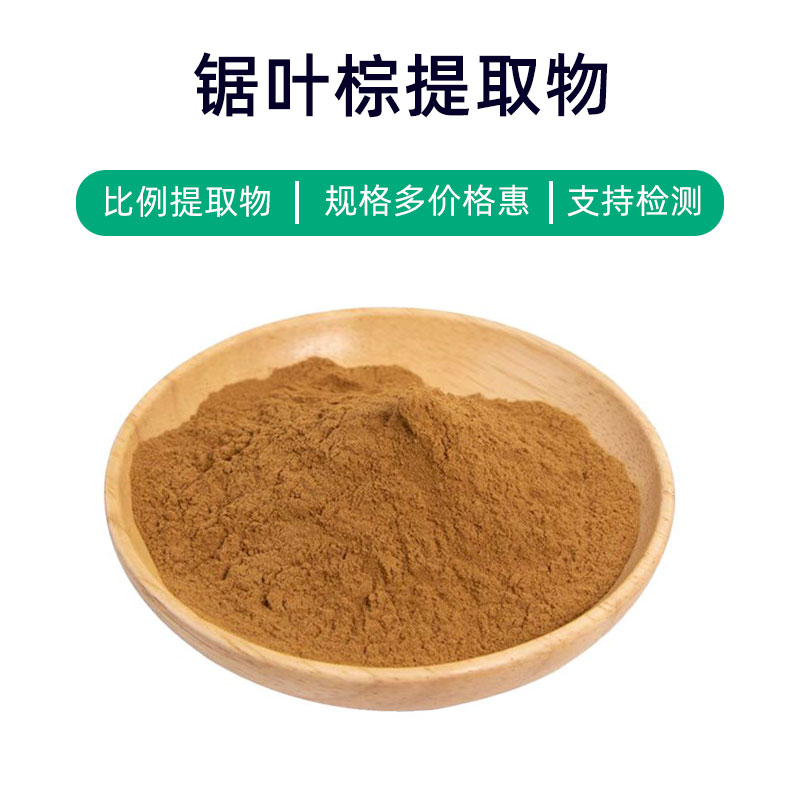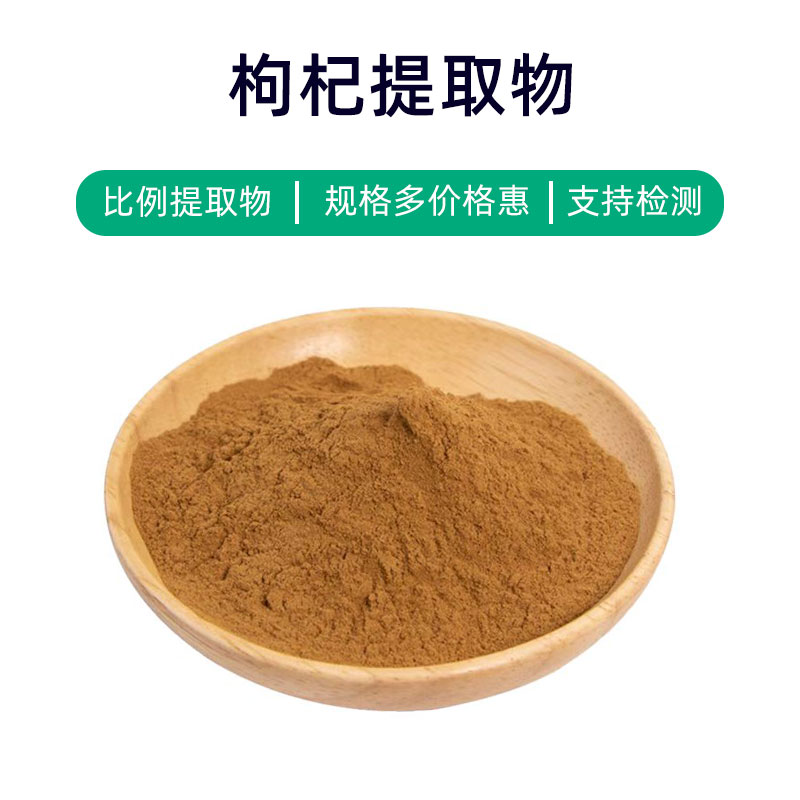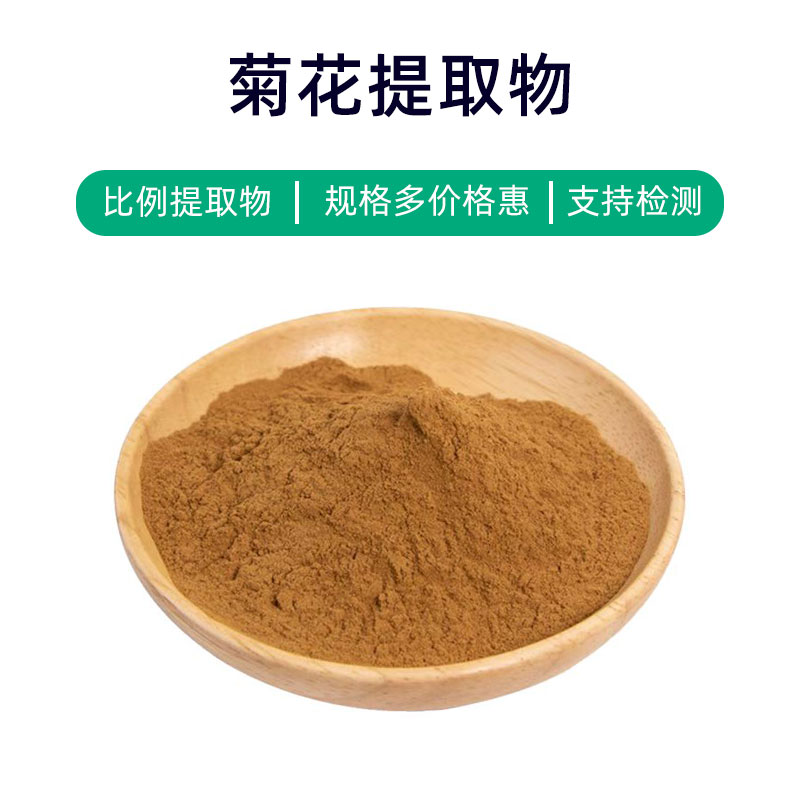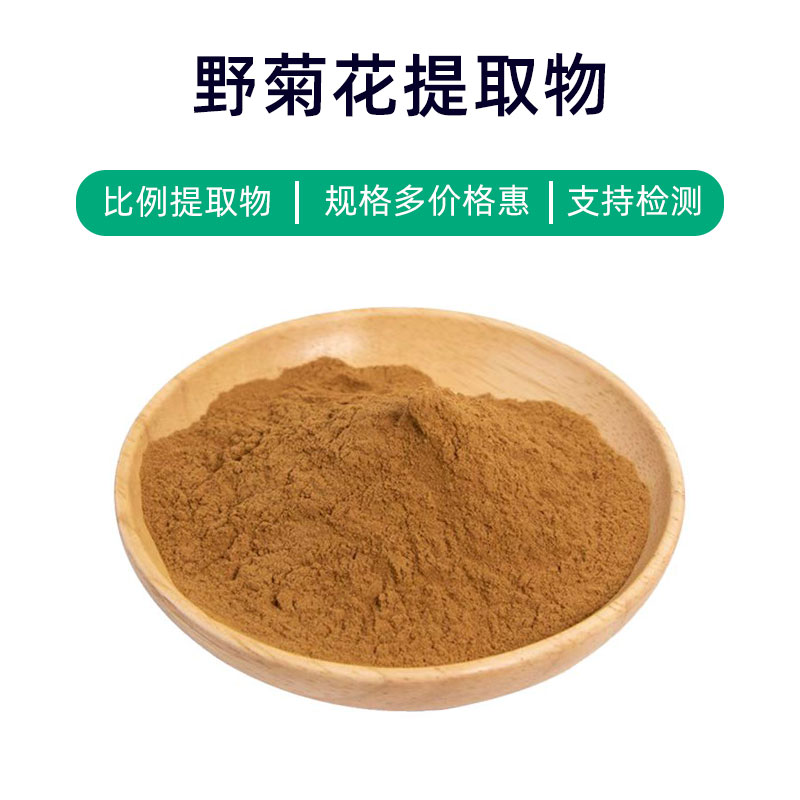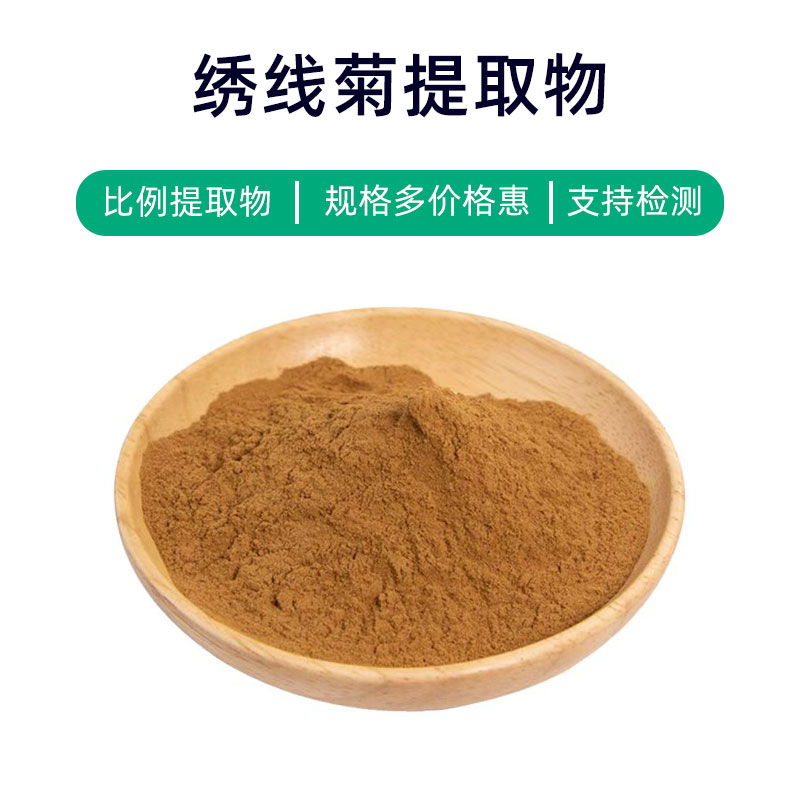Chrysanthemum-Centaurea Extract Product Introduction
Chrysanthemum-Centaurea Extract is a natural plant extract derived from Chrysanthemum-Centaurea (Chrysanthemum indicum). Its main components include flavonoids, volatile oils, and flavonoid glycosides. These active ingredients give the extract a variety of effects.
Firstly, Chrysanthemum-Centaurea Extract has antioxidant properties that help eliminate free radicals in the body, slow down the aging process of cells, and protect the skin from environmental pollution and UV damage. Secondly, it exhibits anti-inflammatory and calming characteristics, making it useful for alleviating skin inflammation and sensitivity, and soothing skin discomfort.
Additionally, Chrysanthemum-Centaurea Extract is widely used in cosmetics and personal care products such as creams, lotions, and masks. In these products, it is often employed to enhance antioxidant efficacy, calm the skin, and improve uneven skin tone. In the medical field, it is used as an adjunct in some medications to help regulate physiological functions and improve overall health.
Overall, Chrysanthemum-Centaurea Extract boasts a wealth of benefits and a wide range of applications, making it an important natural plant extract that significantly promotes skin health, beauty, and well-being.
Chrysanthemum-Centaurea Extract Production Process
The production process of Chrysanthemum-Centaurea Extract typically involves the following steps:
- Raw Material Collection and Preparation: Fresh flowers of Chrysanthemum-Centaurea are collected as raw materials. The flowers should be fresh, free from pests, and harvested at the optimal time.
- Preliminary Processing: The collected flowers are cleaned and processed to remove surface impurities, ensuring the purity and quality of the extract.
- Maceration Extraction: The processed flowers are mixed with an appropriate extraction solvent (such as ethanol or water) and subjected to maceration. During this process, temperature, time, and solvent concentration are controlled to maximize the extraction of target components.
- Filtration and Separation: The macerated solution is filtered through a sieve or other filters to remove solid particles and impurities, resulting in a clarified extract.
- Concentration and Solvent Removal: The filtered extract is concentrated to remove most of the solvent from the extract.
- Refinement and Purification: The concentrated extract undergoes further refinement and purification, often using methods such as coagulation, crystallization, and extraction to eliminate impurities and enhance the purity of target components.
- Drying Finished Product: The refined extract is dried to eliminate residual moisture, resulting in a dry extract product.
- Packaging and Storage: Finally, the dried extract is packaged and stored, typically in sealed containers, to prevent direct sunlight and moisture, ensuring product stability and shelf life.
These are the typical production processes for Chrysanthemum-Centaurea Extract. Each step must be strictly controlled to ensure product quality and safety.
Effects and Side Effects of Chrysanthemum-Centaurea Extract
Chrysanthemum-Centaurea Extract is a commonly used herbal extract with various effects and benefits, primarily including:
- Antioxidant Effects: Rich in natural antioxidants like flavonoids and polyphenols, the extract can neutralize free radicals, reducing oxidative stress on cells and helping to slow the aging process.
- Anti-inflammatory Effects: The active components in the extract possess anti-inflammatory properties, alleviating inflammatory responses and symptoms like skin redness and itching, especially effective for sensitive skin.
- Antibacterial Effects: The extract exhibits inhibiting effects on certain bacteria and fungi, suitable for disinfecting and cleaning the skin surface, preventing infections, and accelerating wound healing.
- Calming Effects: Containing volatile oils, the extract has a gentle aroma that can soothe nerves and relieve anxiety and tension, helping improve sleep quality.
- Moisturizing Benefits: Natural moisturizing factors and vitamins in the extract can increase skin moisture levels, improving dryness and roughness, resulting in softer, more hydrated skin.
- Anti-allergic Properties: The extract can suppress certain allergens, reducing allergic reactions and alleviating skin allergy symptoms, making it suitable for sensitive skin care.
While Chrysanthemum-Centaurea Extract offers various benefits, it is essential to be aware of the following points during usage:
- Risk of Allergies: Some individuals may be allergic to certain components in the extract; it's recommended to perform a patch test on the skin first, and discontinue use if any discomfort arises.
- Dosage Control: Use should be tailored to individual skin types and needs, avoiding excessive use that may cause skin discomfort.
- Storage Guidelines: The extract products should be stored in a cool, dry place, avoiding direct sunlight and high temperatures to maintain their stability and efficacy.
In summary, Chrysanthemum-Centaurea Extract is a safe and effective natural plant extract with multiple benefits, suitable for various skin types for care and maintenance.
Applications and Dosages of Chrysanthemum-Centraea Extract
Chrysanthemum-Centaurea Extract has extensive applications across the fields of medicine, food, and cosmetics. Below are descriptions of its applications and dosages in different areas:
- In Medicine:
- Skin Inflammation Treatment: The extract’s anti-inflammatory components can be used to treat skin conditions such as eczema and allergic dermatitis. Dosage: Apply an appropriate amount of extract to the affected area, 2-3 times a day.
- Antibacterial and Anti-inflammatory: The extract's antibacterial properties are effective for treating minor burns and cuts. Dosage: Apply to the injured area, 2-3 times a day.
- Bronchitis Treatment: Chrysanthemum-Centaurea Extract can be used as an adjunctive treatment for bronchitis, helping to soothe cough and throat discomfort. Dosage: Drink the extract in solution form, 1-2 times a day.
- In Food:
- Herbal Tea: Chrysanthemum-Centaurea Extract can be used to make herbal tea, known for its cooling and beautifying effects. Dosage: Soak an appropriate amount of extract in hot water, and steep to make tea. Honey or lemon can be added to taste.
- Pastry Processing: The extract can also be used in pastry production, such as chrysanthemum cookies, to impart flavor and aroma. Dosage: Mix the extract into the flour according to the recipe before baking.
- In Cosmetics:
- Skincare Products: The extract is commonly found in skincare products for its calming, soothing, and antioxidant effects, suitable for all skin types. Dosage: Apply to the face and gently massage until absorbed.
- Perfumes and Fragrance Products: The light fragrance of Chrysanthemum-Centaurea Extract is often used in perfumes and scented products for a refreshing aroma. Dosage: Spray on the skin or use a diffuser for fragrance dispersal.
Regardless of the application, care should be taken to control dosages when using Chrysanthemum-Centaurea Extract to avoid adverse reactions. In medicinal applications, it is advisable to use as directed by a physician; in food and cosmetic products, follow the product instructions while avoiding contact with the eyes and mucous membranes.
Introduction to the Source Plants of Chrysanthemum-Centaurea Extract, Distribution, and Growing Environment
Chrysanthemum (scientific name: Chrysanthemum morifolium Ramat.) is a member of the Asteraceae family, recognized as both an ornamental and medicinal plant. It originated in China and has a cultivation history spanning thousands of years. Centaurea (scientific name: Centaurea cyanus L.), also known as cornflower, is a wild annual or biennial herbaceous plant belonging to the Asteraceae family.
- Chrysanthemum:
- Plant Characteristics: Chrysanthemum is a perennial herb, with heights ranging from about 30 to 150 cm. Its leaves are often palmately lobed, and its flowers come in various shapes, available in both single and double petals.
- Distribution: Native to China, Chrysanthemum is now widely cultivated around the world and introduced to many countries.
- Growing Environment: This plant favors warm and humid climates and thrives in soils rich in organic matter with good drainage. Plenty of sunlight is beneficial for its growth.
- Centaurea:
- Plant Characteristics: Centaurea is an annual or biennial herb, typically growing between 30 and 100 cm tall. Its leaves are deeply lobed, often blue-purple, but can also vary in color to white, pink, and others.
- Distribution: Originally from Europe, Centaurea is primarily found in Central Europe, Eastern Europe, and Western Europe. It is now widely distributed globally, including in North America, Asia, and Oceania.
- Growing Environment: Centaurea grows well in sunny conditions, in loose, well-drained soils, often found in grassy areas, fields, and roadsides. It is hardy and thrives best in mild climate conditions.
Overall, both Chrysanthemum and Centaurea are hardy plants that prefer sunny environments, adaptable to various soil types, and widely cultivated around the world. They have a broad distribution and have become beloved ornamental and medicinal plants for people globally.
Processing and Storage of Chrysanthemum-Centaurea Extract
The processing of Chrysanthemum and Centaurea extracts typically includes the following steps: First, fresh flowers are collected, impurities are removed, and they are air-dried or dehydrated; next, the plant material is crushed or ground into a fine powder; then appropriate extraction methods (such as water extraction or alcohol extraction) are used to extract the active components; finally, the resulting solution is filtered, concentrated, and dried to produce either powdered or liquid extracts.
For storage, the extracts should be kept in a dry, cool, and well-ventilated environment, avoiding direct sunlight and humidity. Powdered extracts should be stored in sealed containers to prevent exposure to air, moisture, and contamination. Liquid extracts should be stored in sealed glass or plastic bottles, regularly checked for any off-odors or sediment, and replaced if any signs of spoilage are detected. Proper storage and preservation methods can extend the shelf life and efficacy of the extracts, ensuring the quality and effectiveness in subsequent applications.
Monica Sun is a seasoned expert in the plant extraction industry with over a decade of experience in research and production. She specializes in the extraction and purification of plant active ingredients, focusing on driving innovation in natural product applications. Monica has participated in the development of multiple functional plant extracts, delivering high-value natural raw material solutions for the health food, pharmaceutical, and dietary supplement sectors.









